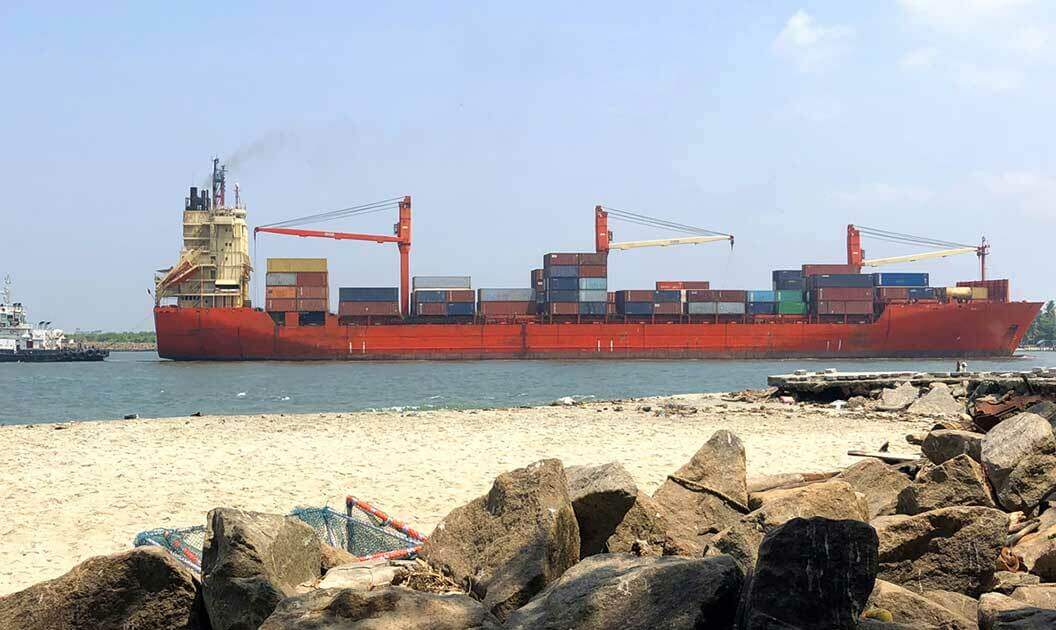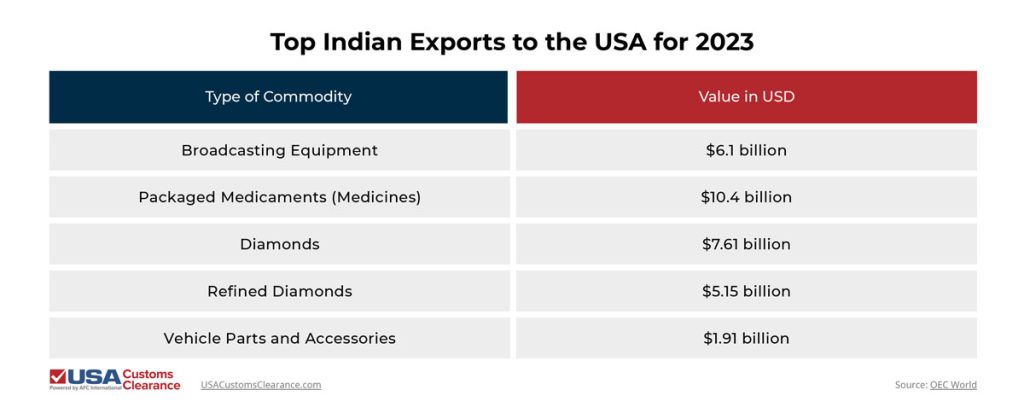
Import costs from India, whether on flowing silk or life-saving medicines, are an important consideration for importers. The USA imported over $187 billion worth of goods and services from India in 2024 alone, and knowing how to calculate the attendant import charges is essential to doing business.
Key Takeaways
Per U.S. Customs and Border Protection (CBP), import costs from India include tariffs, shipping fees, and duties. These costs are determined based on what you’re importing and its value. They can change due to:
Join us as we explain the various import costs from India to the U.S.
On August 27 2025, the US imposed an additional 25% tariff on most imports from India, bringing the total ad valorem tariff rate to 50%. Here are some of the most important facts and figures for importers to keep in mind when sourcing goods from India in 2025.
Importers who wish to avoid these higher rates can often do so by diversifying their suppliers across multiple trading partners.

Our 45 Minute Licensed Expert Consulting Will Personally Guide You.
Whenever you import goods for resale in the USA, the most prominent costs areduties and customs fees, shipping charges, and the cost of the imported merchandise itself. Importers need to understand these through and through. Otherwise, they run the risk of incurring fines and penalties from the CBP, the customs authority here in the United States.
Let’s begin with word about the cost of goods imported from the subcontinent.
One factor importers should keep an eye on with regard to Indian imports and pricing is the weather. Extreme weather conditions play a big part in the price and availability of some key Indian exports.
Foods such as rice and shrimp are key Indian exports, but are sensitive to the region’s weather anomalies. India’s vulnerability to meteorological phenomena such as El Niño means that there have been seasons of loss that result in significant price hikes.
The price of merchandise is just one part of the puzzle. The costs discussed in the following section are more difficult to calculate and may require the assistance of a customs broker.
Think of these as the cost of doing business. There are many steps in the import process, and each step adds on to the overall price of an import transaction.
Key components of Indian import costs include the following.
While other types of fees might pop up depending on the commodities you plan to import, these four types are commonplace across most import transactions.
Several factors can influence import costs, such as:
Before we discuss how to calculate these costs, let's address some common questions about when these fees are applicable, and times when they might not be assessed.

If you’re importing goods from India, and there are duties and/or tariffs on those goods, you’ll need to pay them. These costs must be paid in order to do business as an importer.
If the commodities happen to fall under an FTA because they are built with components from another country, you may find that no duties are required.
However, this is rare, and chances are you will still need to pay the duty as though all components did come from India. There is no legal, law-abiding way to circumvent these fees if the CBP calls for them.

As stated earlier, the costs associated with importing from India are heavily influenced by the type of commodities being imported. Importers generally know what types of goods they want to bring in for resale. However, it’s never a bad idea to review historical buying habits to see what Indian imports sell well in the United States
In the following table, we can see what the top commodities imported from India to the U.S. were for 2021.

Source: oec.world
The variety of commodities shown here gives us a good indication as to why import costs can be so difficult to determine prior to shipment. For instance, diamonds are small and valuable, making them prime targets for theft. As such, cargo insurance costs will be higher than they would be for items like clothing or furniture. Similarly, crustaceans require refrigerated transport, which commands a premium of its own.
Now that we’ve defined some of the key costs of importing from India and their most popular exports, we can discuss the concepts of import compliance. This will help you determine expected import and shipping fees.
In the parlance of U.S. importers, compliance refers to meeting all requirements the CBP sets for fulfilling import transactions. Compliance ensures a smooth customs process and helps importers avoid legal issues and penalties.
Here are some general guidelines to meet CBP compliance requirements.
Following these guidelines helps in creating a seamless import process and maintaining a good standing with CBP.

Duties are assessed on transactions valued over $2,500 USD, unless the goods are covered under an FTA, which in this case, does not apply. Duty rates are determined by the type of goods being imported.
To find the duty rate for any particular commodity, you can use an HTS lookup tool such as our own, which is found here. You can also use the CBP's lookup tool if you prefer.
Before we discuss calculating duties on a standard import transaction, there are two specific kinds of that merit special mention: anti-dumping duties and countervailing duties, also called AD/CVD. These are used when foreign entities or powers try to undermine U.S. manufacturers by flooding the market with undervalued goods. The end goal of this strategy is to put competitors out of business and then raise the price of the goods once there's little to no competition.
A current list of active AD/CV duties on Indian imports can be found on the federal register. Notably, a final judgement for applying AD/CV duties to paper bags from India is scheduled for March 2024.
For now, let's take a look at how to calculate standard duties on goods imported from the subcontinent.

Let’s say we’re importing 100 silk handbags from India to the United States. Using an HTS lookup tool, we can find the HTS code for handbags, which is 3926.90.33. We can also see that handbags incur duties based on number of units imported, which in this case is 100. Different goods may accrue duties based on overall weight and other factors.
The duty rate for handbags is 6.5 percent. Since we don’t have an FTA with India for handbags, the rate applies. Our price per handbag is $25.00 per unit, so the duty calculation will look like this:

Since the total value of the transaction is $2,500, a duty rate of 6.5 percent results in a $162.50 duty fee on top of the sale price.
Keep in mind that most import transactions are far more complicated and highly-valued than the example above. These calculations also only take duty rates into account, not any active tariffs. Failure to use the correct HTS code can lead to fines and significant delays in shipping. This is why many importers choose to work with U.S. customs specialists who have experience and training that cuts down on the chances of errors.
Import duty rates and other import taxes cannot be reduced at a non-government level. Reducing import costs from India is therefore a matter of managing shipping costs, avoiding fines, and not overpaying duties.
Some strategies you can use to keep import costs from getting out of hand include:
Using these strategies will keep your costs manageable, ensuring your business remains competitive.
BBetween customs fees, duties, and the price of shipping, importers often struggle to accurately calculate their costs of doing business. However, working with an expert customs broker can bring clarity to this process and ensure that your import transactions are accurate and trouble-free.
At USA Customs Clearance, our certified customs brokers have over a century of combined experience assisting import businesses with every aspect of importing goods into the United States. Our services include:
Give us a call at (855) 912-0406 or contact us online today. No matter what you plan to import from India, we have the know-how and resources to help you avoid excessive costs and fees.
 Copy URL to Clipboard
Copy URL to Clipboard
Hi,
I want to import around 100 qty of water filters. What are the freight charges and tariffs involved?